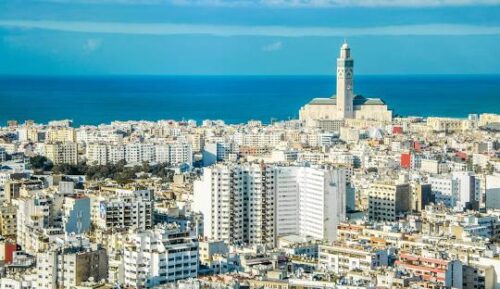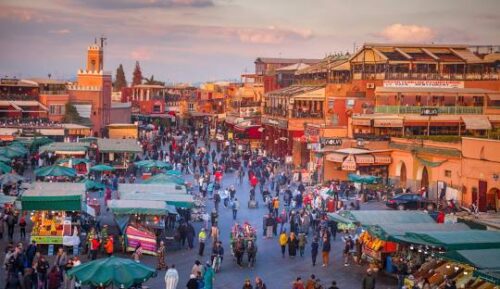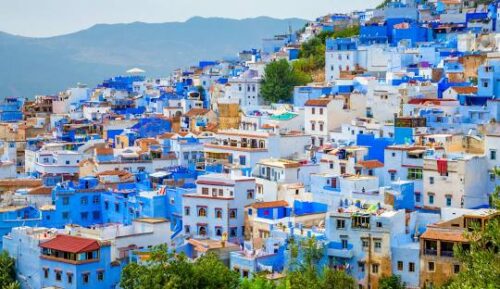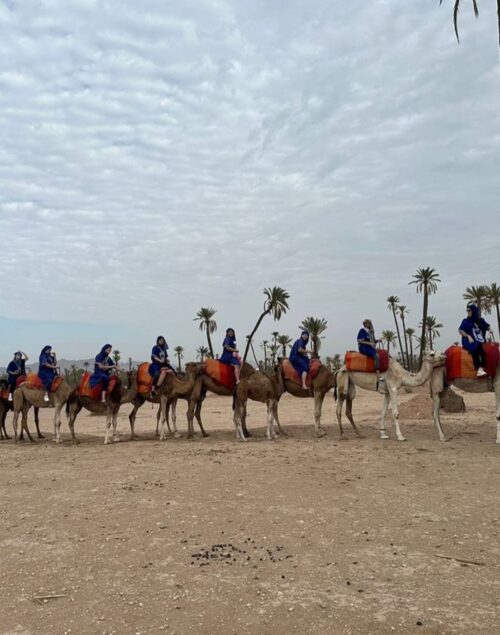In this detailed guide, we will explore the various aspects of the Rif valley mountains hike, from the best trails and the local culture to practical tips for making the most of your trek. The Rif Mountains run parallel to the Mediterranean coast, creating a natural barrier that influences the local climate. This range is characterized by sharp peaks and deep valleys, with Jebel Tidirhine standing as its highest point at 2,456 meters.
The region benefits from a Mediterranean climate, which brings mild, wet winters and hot, dry summers. The best times to hike are during spring (April to June) when the landscape is vibrant and green, or during autumn (September to November) when the weather is pleasantly cool. A paradise for hikers, Talassemtane offers a range of trails that pass through pine forests, alongside rivers, and up to panoramic vistas.
The park is home to the famous Akchour Waterfalls and the Bridge of God, a natural rock arch that is a marvel to behold. Beginning in the blue city of Chefchaouen, this trail winds its way through to the small village of Akchour. It’s a moderate Rif valley mountains hike that offers a mix of cultural and natural sights, making it ideal for those looking to experience both.
A challenging trek leading to the summit of Jebel Lakraa, this route promises stunning views over the Mediterranean and the surrounding peaks. It’s suited for more experienced hikers looking for adventure. The Rif region is a hotspot for biodiversity. The forests are densely packed with fir, pine, and cedar trees, interspersed with open pastures and scrublands.
Rif valley mountains hike visitors might spot a variety of wildlife, including the endangered Barbary macaque, wild boar, and numerous species of birds. Spring brings a splash of color with wildflowers, including the rare Rifian tulip. The Rif Mountains are predominantly inhabited by the Berber people, who have maintained their unique culture and traditions through centuries.
Villages in the Rif are known for their distinctive architecture with red-tiled roofs and brightly painted walls, particularly evident in Chefchaouen. Hikers can enjoy local hospitality, taste traditional dishes such as tagine and couscous, and learn about the beautiful and interesting Amazigh heritage through music, dance, and crafts.
For this Rif valley mountains hike, ensure you are well-prepared with maps, appropriate clothing, and gear. The weather can change rapidly, so layers are recommended. Hiring one of our local guides is advisable, not only for navigation but also to enrich your hike with insights into the local culture and environment.
The Rif Mountains are a precious ecological area. Stick to the trails, carry out all trash, and respect wildlife and plant life. Accommodation options range from camping in the wild to staying in guesthouses in the villages. Planning ahead is crucial, especially during the peak seasons. While generally safe, it’s important to take usual precautions such as informing someone of your itinerary and being aware of your physical limits.
Rif valley mountains hike is an opportunity to immerse yourself in the natural beauty and rich cultural tapestry of northern Morocco. Whether you’re a seasoned hiker or a casual trekker, the Rif offers a range of experiences that promise both challenge and reward. So lace up your boots, pack your spirit of adventure, and prepare for a journey that will leave you with lasting memories.











Reviews
There are no reviews yet.